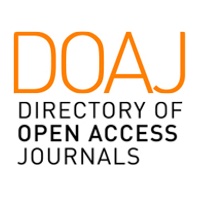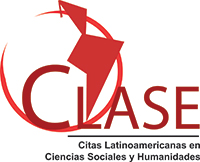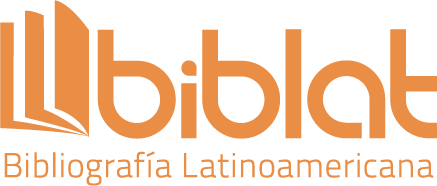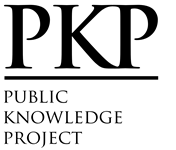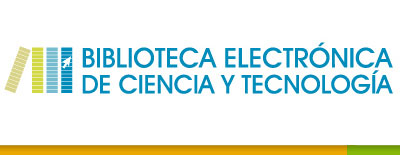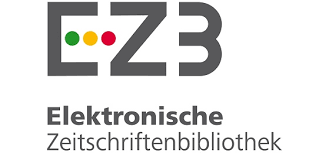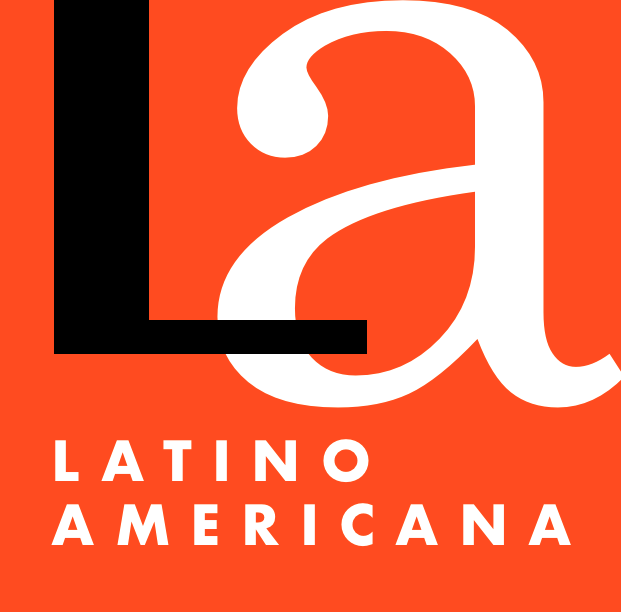Ciência e Religião na Prática Docente Relacionada à Morte
Resumo
Para melhor entender como professores em sistemas educacionais secularizados lidam com conteúdos que se estendem além do campo epistemológico científico, este estudo examinou as práticas pedagógicas de professores em escolas americanas ao considerarem atividades instrucionais sobre o tema da morte e do morrer. Como parte de um método de pesquisa contextualizado, casos de sala de aula foram usados para elicitar as práticas dos professores relacionadas à morte. Os professores participantes foram questinados sobre quatro cenários pedagógicos: (1) uma excursão a um cemitério, (2) uma visita a um museu contendo uma exposição de múmias egípcias seguida de uma discussão sobre embalsamamento, (3) um projeto ecológico envolvendo coleta e análise de dados de animais atropelados e (4) uma aula involvemendo o cozimento de uma lagosta viva. Observou-se que, ao invés de abordarem essas atividades sobre a morte da mesma maneira, a prática docente foi altamente variada dependendo da identidade do falecido (se humano ou não) e da recência da morte (quão recente foi a morte). Os professores recorreram à evasão ao lidar com a aula de cozimento da lagosta e a excursão ao cemitério. Reflexo das representações sociais prevalentes da ciência e da religião como empreendimentos separados e em conflito, esta evasão promoveu separação epistemológica por meio da preclusão da exposição dos alunos a formas não científicas de se entender a morte. Em contraste, professores favoreceram a neutralidade e experiência indireta com relação a discussão das múmias e a investigação de animais atropelados. Consistente com as representações sociais da ciência e da religião como empreendimentos dialógicos e interativos, essas práticas mostraram potencial para criar espaços educacionais holísticos para a exposição dos alunos a formas epistemicamente diversas que entendem a morte além da ciência.
Downloads
Referências
Aechtner, T. (2020). Media and science-religion conflict: Mass persuasion in the evolution wars (1st ed.). Routledge.
Aghababaei, N. (2016). Scientific faith and positive psychological functioning. Mental Health, Religion & Culture, 19(7), 734–41.
American Psychological Association (APA) (2004). Violence in the media: Psychologists help protect children from harmful effects. Retrieved on August 20th, 2012 from website: http://www.apa.org/research/action/protect.aspx.
Barbour, I.G., (1966). Issues in science and religion. Vantage.
Barnes, E., & Oliveira, A.W. (2018). Teaching scientific metaphors through informational text read-alouds. The Reading Teacher, 71(4), 463-472.
Bernard, H.R. (2002). Research methods in anthropology: Qualitative and quantitative approaches (5th ed). Alta Mira Press.
Catto, R. A., Jones, S., Kaden, T., & Elsdon‐Baker, F. (2019). Diversification and internationalization in the sociological study of science and religion. Sociology Compass, 13(8). https://doi.org/10.1111/soc4.12721.
Day, J. (2014). "Thinking makes is so": Reflections on the ethics of displaying Egyptian mummies. Papers on Anthropology, XXIII (1), 29–44.
Desmond J (2013) Requiem for roadkill: Death and denial on America’s roads. In H. Kopnina & E. Shoreman-Ouimet (eds), Environmental anthropology: Future directions (pp. 46–58). Routledge.
Donnelly, D. (2006). Patience, compassion, hope and the Christian Art of dying well [book review]. Theological Studies, 67(1), 208-209.
Easley, L.M. (2005). Cemeteries as science labs. Science Scope, 28-32.
Elsdon-Baker, F., Leicht, C., Mason-Wilkes, W., Preece, E., & Piggot, L. (2017). Science and religion: Exploring the spectrum: Summary report of preliminary findings for a survey of public perspectives on evolution and the relationship between evolutionary science and religion. Newman University and YouGov. https://sciencereligionspectrum.org/wp-content/uploads/2017/09/SRESYouGov-survey-preliminary-findings-5.9.17.pdf.
Eisner, E.W. (1985). Learning and teaching the ways of knowing. University of Chicago Press.
Emerson, R.M., Fretz, R.I., & Shaw, L.L. (1995). Writing ethnographic fieldnotes. University of Chicago Press.
Fauske, R.H. (2023). Gravestones, zombies and dead siblings: graveyards as artefacts for children’s existential questions. European Early Childhood Education Research Journal, 31(2), 147-161.
Fernández-Alcántara, M., de Los Santos-Roig, M., Pérez-Marfil, M.N., Cruz-Quintana, F., Vázquez-Sánchez, J. M., & Montoya-Juárez. R. (2021). A new instrument to assess children’s understanding of death: Psychometrical properties of the EsCoMu scale in a sample of Spanish children. Children, 8, 125, https://doi.org/10.3390/children8020125.
Fitz-Herbert, A.L., Rivera, R., Ketelhohn, F., & Elsdon-Baker, F. (2023). Conflict narrative, stigmatisation and strategic behaviour of religious scientists in the Argentinean scientific field. Acta Sociologica, 67(2), 149-163. https://doi.org/10.1177/00016993231173292.
García Cuadrado, J.A. (2019). Antropología filosófica: Una introducción a la filosofía del hombre (7th edition). EUNSA.
Glaser, B.G., & Strauss, A.L. (1967). The discovery of grounded theory: Strategies for qualitative research. Aldine.
Goodwin, C., & Davidson, P. M. (1991). A child’s cognitive perception of death. Early Childhood Education Journal, 2, 21–24.
Jenkins, T. (2011). Contesting human remains in museums: The crisis of cultural authority. Routledge.
Johnson, K.A., Okun, M.A., & Moon, J.W. (2023). The interaction of faith and science mindsets predicts perceptions of the relationship between religion and science. Current Research in Ecological and Social Psychology, 4 (100113), 1-7.
Kearl, M.C. (1989). Endings: The sociology of death and dying. Oxford University Press.
Ketchel, J.A. (1986). Helping the young child cope with death. Day Care and Early Education, 14, 24-27.
Koballa, T.R., & Tippins, D.J., (2004). Cases in Middle and Secondary Science Education: The Promise and Dilemmas (2nd Ed.). Pearson Merrill Prentice Hall.
Kronaizl, S.G. (2019). Discussing death with children: A developmental approach. Pediatric Nursing, 45(1), 47-50.
Lakoff, G., & Johnson, M. (1999). Philosophy in the flesh: The embodied mind and its challenge to western thought. Basic Books.
Lakoff, G., & Turner, M. (1989). More than cool reason: A field guide to poetic metaphor. University of Chicago Press.
Las Heras, M., Grau-Grau, M., & Rofcanin, Y. (2023). Human flourishing: A multidisciplinary perspective on neuroscience, health, organizations and arts. Switzerland: Springer.
Latour, B. (1993). We have never been modern. Harvard University Press.
Leggo, C. (1998). Living un/grammatically in a grammatical world: The pedagogic world of teachers and students. Interchange, 29(2), 169-184.
Levering, M. (2018). Dying and the virtues. Eerdmans.
Longbottom S, & Slaughter V. (2018). Sources of children’s knowledge about death and dying. Philosophical Society Transactions of the Royal B, 373, 20170267.
Miller, J. P. (1986). Atomism, pragmatism, holism. Journal of Curriculum & Supervision, 1(3), 175–196.
Miller, R. (1997). What are schools for?: Holistic education in American culture. Holistic Education Press.
Moore, C. & Huber, R. (2009). Roadkill data analysis: Using spreadsheets to integrate math and science. Science Scope, 26-29.
Moscovici, S. (2000). Social representations: Exploration in social psychology. Polity Press.
O’Callaghan P. (2004). La muerte y la esperanza. Palabra.
O’Callaghan P. (2009). La muerte y la inmortalidad. In J.A. Mercado & F. Labastida (Eds.), Philosophica: Enciclopedia filosófica on line, http://www.philosophica.info/archivo/2009/ voces/muerte-inmortalidad/Muerte-inmortalidad.html.
Oliveira, A.W., Reis, G., Chaize, D.O., & Snyder, M.A., (2022). Death of an elementary classroom pet: Possibilities for science and environmental education. In J. Rink, A.A.Viveiro, M.E. de Andrade, & A.S. Neto (Eds), Pesquisas e Experiências em Ensino de Ciências e Educação Ambiental (trans. Research and Experiences in Science and Environmental Education) (pp. 68-90). Edições Hipótese.
Oliveira, A.W., Reis, G., Chaize, D.O., & Snyder, M.A. (2014). Death discussion in science read-alouds: Cognitive, sociolinguistic, and moral processes. Journal of Research in Science Teaching, 51(2), 117-146.
Olsson, L.M. (2013). Taking children’s questions seriously: The need for creative thought. Global Studies of Childhood, 3(3), 230-253.
Paryente, B., & Gez-Langerman, R. (2023). Kindergarten children’s reactions to the COVID-19 pandemic: Creating a sense of coherence. Journal of Early Childhood Research, 21(2) 133–146.
Pieper J. (1999). Death and immortality. St. Augustines Press.
Polo, L. (1993). Quién es el hombre. Un espíritu en el mundo (2nd ed.). Alcalá: Ediciones Rialp.
Pompele, S., Ghetta, V., Veronese, S., Mihaela Dana Bucuță, M.D., & Testoni, I. (2022). Pastoral Psychology, 71, 257–273.
Renaud, S., Engarhos, P., Schleifer, M., & Talwar, V. (2013). Talking to children about death: Parental use of religious and biological explanations. Journal of Psychology and Christianity, 32(3), 180-191.
Renaud, S.J., Engarhos, P., Schleifer, M., Talwar, V. (2015). Children’s earliest experiences with death: Circumstances, conversations, explanations, and parental satisfaction. Infant and Child Development, 24, 157–174.
Ristiniemi, J., Skeie, G., & Sporre, K. (2018). Challenging life: Existential questions as a resource for education. Waxmann.
Robson, C. (2002). Real world research (2nd ed). Blackwell Publishing.
Sayer, D. (2010). Ethics and burial archaeology. Duckworth
Schafer, Z., & Scharmann, L.C. (2022). Understanding "death": Creating student opportunities for meaningful emotional expression in the science classroom. The Science Teacher, 38-41.
Schulman, J.H. (1992). Toward a pedagogy of cases. In J. Schulman (Ed.), Case methods in teacher education (pp. 1-30). Teacher College Press.
Segall, A., & Burke, K. (2013). Reading the bible as a pedagogical text: Testing, testament, and some postmodern considerations about religion/the bible in contemporary education. Curriculum Inquiry, 43(3), 305-331.
Snowden, J.H. (1917). The scientific spirit in theological study and teaching. The Biblical World, 49(5), 275-280.
Solomon, R.C., & Higgins, K.M. (2006). The big questions: A short introduction to philosophy (8th edition). Wadsworth.
Stenmark, M. (2004). How to relate science and religion: A multidimensional model. William B. Eerdmans Publishing Company.
Su-Russell C., Russell L.T., Ermer A.E., Greiner C., & Gregory R. (2021). Parents’ anticipated discussion about death with young children. OMEGA—Journal of Death and Dying, 1-22.
Tenzek, K.E., & Nickels, B.M. (2017). End-of-life in Disney and Pixar films: an opportunity for engaging in difficult conversation. Omega, 50, 267–280.
Tippins, D.J., Koballa, T.R., & Payne, B.D. (2002). Learning from cases: Unraveling the complexities of elementary science teaching. Allyn & Bacon.
Tiso F.T., & O’Callaghan P. (2010). Death. In M. Baumann & G. Melton (Eds.), Religions of the world: A comprehensive encyclopedia of beliefs and practices (pp. 866 – 874). ABC-CLIO.
Vogt, C.P. (2004). Patience, compassion, hope, and the Christian art of dying well. Rowman & Littlefield.
Westmoreland, P. (1996). Coping with death: Helping students grieve. Childhood Education, 72, 157-160.
Wiggins, G., & McTighe, J. (2005). Understanding by design (2nd edition). Association for Supervision and Curriculum Development.
Witz, K., & McGregor, N. (2003). Morality, spirituality and science in the elementary classroom. In D. L. Zeidler (Ed.), The role of moral reasoning and discourse on socioscientific issues in science education (pp. 165-182). Kluwer Academic Press.
Yepes. R. (1996). Fundamentos de antropología: Un ideal de la excelencia humana. EUNSA.
YOUCAT Foundation (2018). YOUCAT for kids: Catechism of the Catholic Church for children and their parents. Catholic Truth Society.
Zanetti, L. (2020). Why am I here? The challenges of exploring children's existential questions in the community of inquiry. Childhood & Philosophy, 16, 01-26.
Copyright (c) 2025 Alandeom Wanderlei de Oliveira, Javier Pérez Wever, Carmen Camey Marroquín, Antonio Miron

This work is licensed under a Creative Commons Attribution-NonCommercial-ShareAlike 4.0 International License.
Os autores detêm os direitos autorais e garantem à revista o direito de ser a primeira publicação do trabalho. Caso uma tradução do artigo já publicado na Austral Comunicación possa ser publicada em outra revista, solicita-se registrar a publicação original na versão traduzida.
A licença utilizada é CC BY-NC-SA, que permite compartilhar (copiar e redistribuir o material em qualquer meio e formato) e adaptar (remixar, transformar e construir sobre o material) nos seguintes termos: atribuição (reconhecer a autoria) e não comercial (o material não pode ser usado para fins comerciais). Atualização: 1 de fevereiro de 2022.
A Austral Comunicación permite ao (s) autor (es) reter os direitos de publicação sem restrições.










